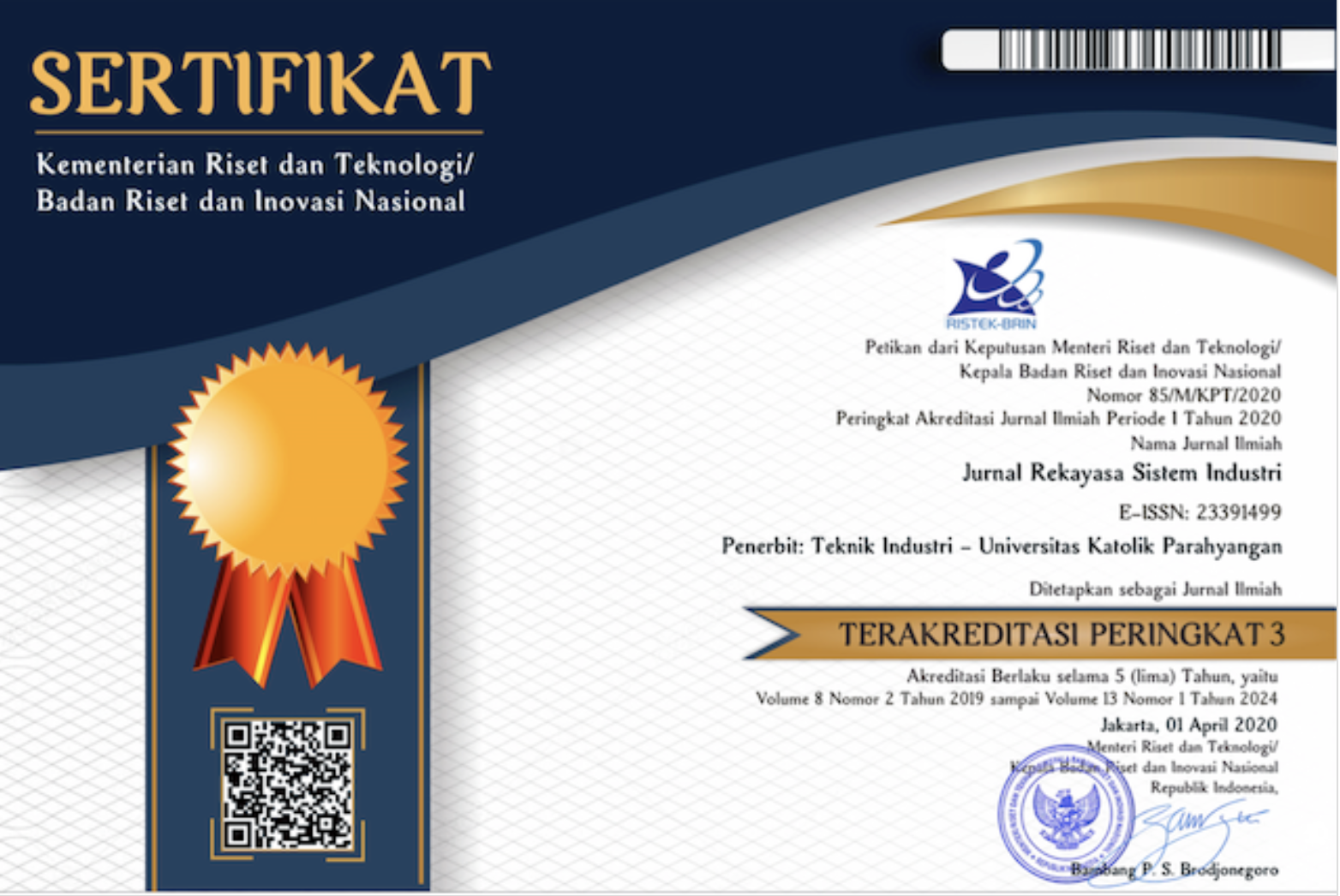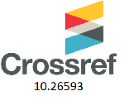Determining The Ergonomic Writing Format of Paper Based Scientific Report for Efficiency of Paper Usage (A Case Study in Ma Chung University, Malang)
DOI:
https://doi.org/10.26593/jrsi.v11i2.5663.191-200Keywords:
completely randomized design, fry graph formula, paper efficiency, reading comprehension, writing formatAbstract
Paper usage in Universities leads to a large amount of paper waste. An adjustment of writing format without overriding ergonomic aspects is a legitimate way of using paper more efficiently. Three factors affect reading comprehension i.e line length, spacing, and font size. The experimental design 2 × 3 × 2 complete randomized design (CRD) had been proposed and twelve combinations of treatments in the form of writing format had been tried out to respondents. Each treatment was repeated three times and each respondent only got one treatment. The best writing format is line length 10.2 cm, spacing 2, and font size 12 point. Paper savings that can be done using the suggested format compared to the currently used writing format in University is 40% and 25%, while the efficiency is 46.95% and 21.02%.
References
Arditi, A. & Cho, J. (2005). Serifs and Font Legibility. International Jurnal of Vision Research, 45(9), 2926-2933.
Banerjee, J., et al. (2011). Readability, Subjective Preference and Mental Workload Studies on Young Indian Adults for Selection of Optimum Font Type and Size during Onscreen Reading. Al Ameen Journal of Medical Science, 4(2), 131-143.
Bernard, M., et al. (2003). Comparing the effects of text size and format on the readability of computer-displayed Times New Roman and Arial text. International Journal of Human-Computer Studies, 59(17), 823-835.
Bernstein, M.R. (1955). Relationship between Interest and Reading Comprehension. International Journal of Education Research, 49(4), 283-288.
Boyarski, D., et al. (1998). A study of fonts designed for screen display. Proceedings of the SIGCHI Conference on Human Factors in Computing Systems, CHI’98. Los Angeles, April 18-23, 87-94.
Childers, T.L, & Jass, J. (2002). All dressed up with something to say: Effects of typeface semantic associations on brand perceptions and consumer memory. International Journal of Consumer Psychology, 12(2), 93-106.
Fadhilah, et al. (2011). Kajian Pengelolaan Sampah Kampus Jurusan Arsitektur Fakultas Teknik Universitas Diponegoro. MODUL, 11(2), 62-71.
Gaspersz, V. (1994). Metode Perancangan Percobaan. Bandung: Armico.
Geske, J. (2000). Readability of body text in computer mediated communications: Effects of type family, size and face, [Online], Diakses dari: http://www.public.iastate.edu/~geske/scholarship.html, [2019, 8 Mei].
Grant, M.M., & Branch, R.M. (2000). Performance differences between serif fonts and sans serif fonts in an on-screen reading task. Paper presented at the International Visual Literacy Association, Iowa.
Harsojuwono, B.A,, Arnata, I.W., & Puspawati, G.A.K.D. (2011). Rancangan Percobaan: Teori, Aplikasi SPSS, dan Excel. Malang: Lintas Kata Publishing.
Martutik & Rani, A. (2013). Membaca Intensif. Malang: Surya Pena Gemilang.
Mills, M., & Weldon, L. (1987). Reading text from computer screens. ACM Computing Surveys (CSUR), 19(4), 329-357.
Montgomery, D.C. (2013). Design and Analysis of Experiments. Arizona: John Wiley & Sons, Inc.
Nahm, E.S., et al. (2004). Usability of health websites for older adults: A preliminary study. International Jurnal of Computers Informatics, 22(19), 326-334.
Nurhayati. (2008). Studi Perbandingan Metode Sampling antara Simple Random dengan Stratified Random. Jurnal Basis Data, ICT Research Center UNAS, 3(1), 18-32.
Sugiyono. (2014). Statistika untuk Penelitian. Bandung : Alfabeta.
Tullis, T.S., Boynton, J.L., & Hersh, H. (1995). Readability of Fonts in the Windows Environment (Interactive Poster). Proceedings of ACM CHI Conference on Human Factors in Computing Systems, CHI’95. Denver, May 7-11, 127-128.
Tinker, M.A., dan Paterson, D.G. (1929). Studies of Typographical Factors Influencing Speed of Reading: X. Style of Type Face. International Journal of Applied Psychology, 16(6), 605-613.













